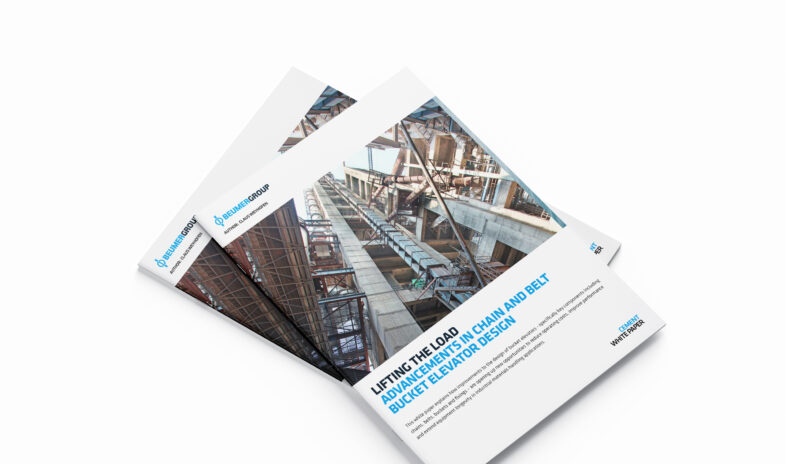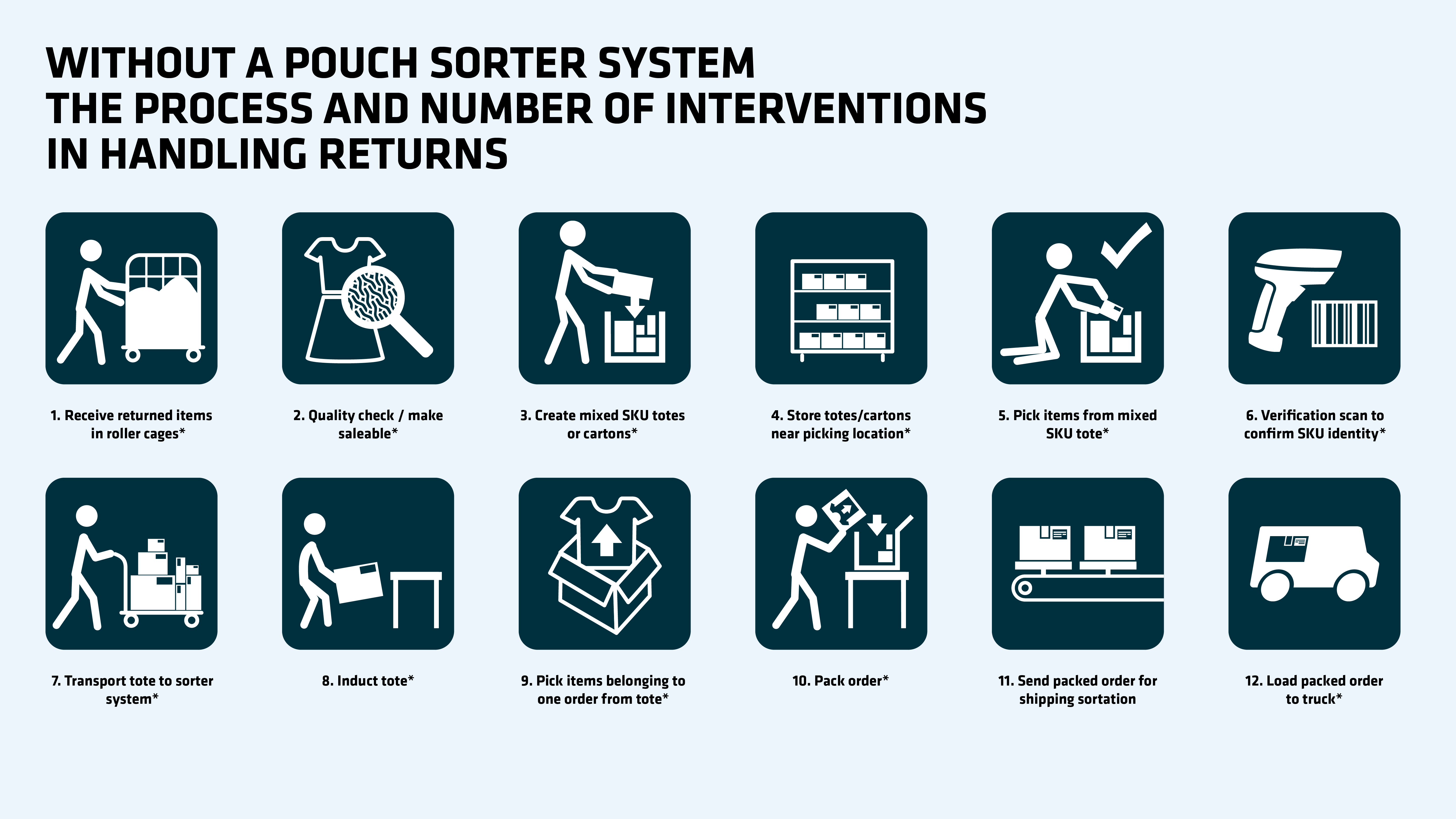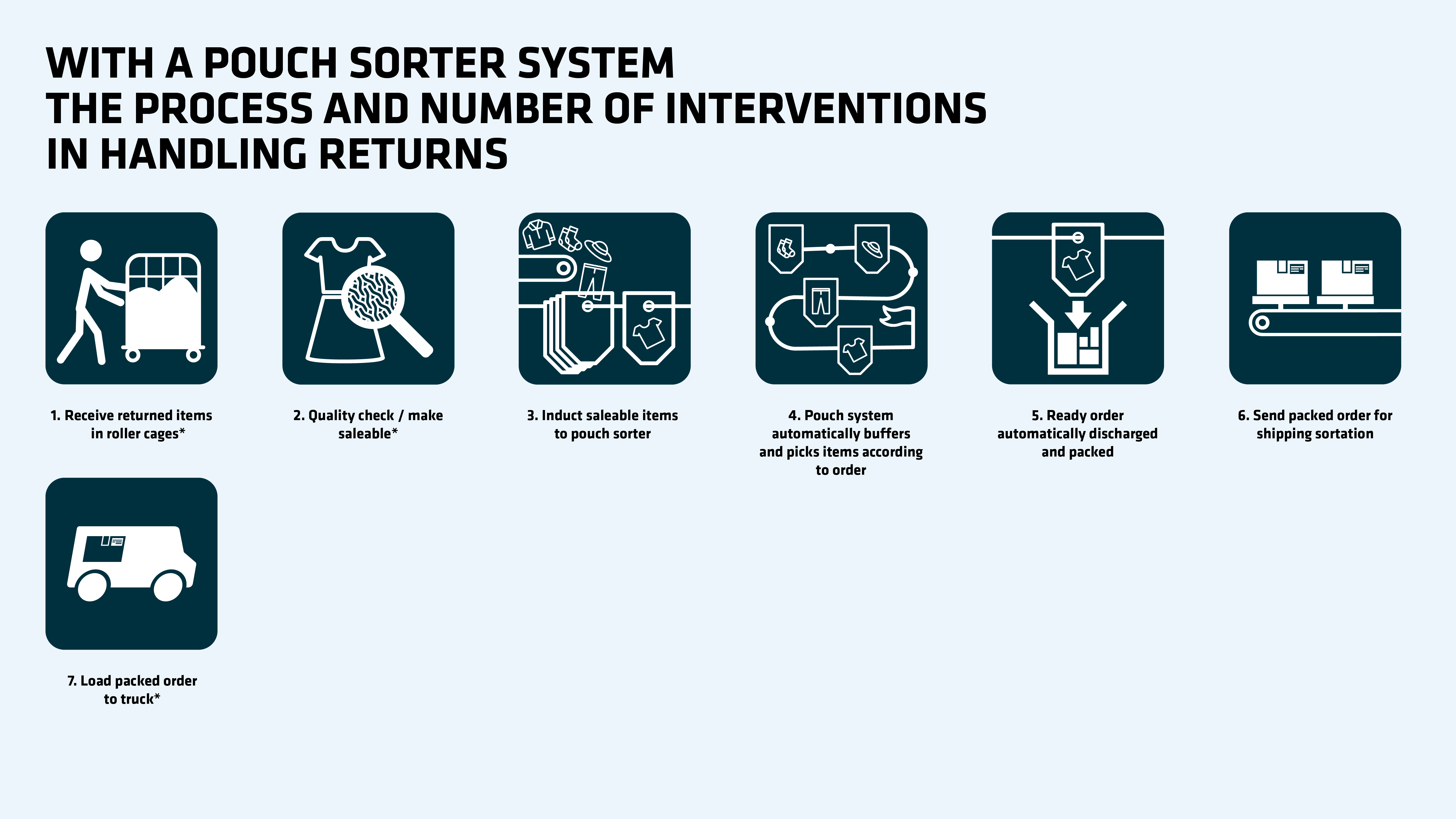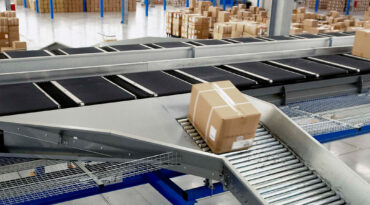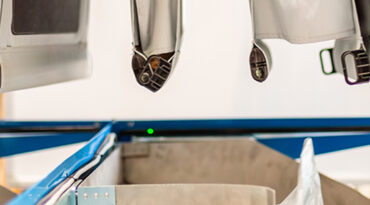An illustration of the reduction in processes and number of interventions involved in handling returns using pouch sorter technology.
HOW POUCH SORTER SYSTEMS CAN MINIMISE THE TOUCHES NEEDED IN THE RETURNS PROCESS
That’s where the pouch (or pocket) sorter system comes into play. This specialised e-commerce fulfilment technology is able to transport, sort, sequence and store both outbound and returned items. As such, it can simplify and streamline a number of steps in e-commerce fulfilment in general.
Pouch technology eases the handling of returns by placing each item directly into a pouch rather than sending it back to the shelf or regular storage, where it has to be picked again if it is ordered.
The pouch system serves as an intermediate buffer for return items typically resold within three days. Returns needed to fulfil an order are automatically retrieved from the dynamic buffer and sent to sortation.
Only items unsold after a few days are returned to shelf storage – or shipped for recycling – as part of an automatic, easy housekeeping process run during low-throughput periods.
Even these unsold items can be sorted to any required criteria. For example, all pieces of an unsold SKU can be consolidated at a packing station, placed in a tote or carton, and returned to storage as a single-SKU unit.
In this way, the pouch system dramatically reduces the cost of handling returns; the fewer times an item is touched – and the shorter and cleaner the process – the more value the item retains.
HOW TO TURN REVERSE LOGISTICS INTO A VALUE CHAIN
If fashion distributors can capture the potential benefits of returns, they may even start to maximise their recovery rates on returns. By taking advantage of a high-end automated sortation system, for example, it is possible for fashion distributors to create a value chain from returns.
The value of automated sortation is that it can be highly accurate. It can achieve finer sorting that would typically take significant labour and time. For example, once the distribution facility has handled the initial receipt of the returns, the automated system can sort items into individual SKU master packs or gaylords destined for the next market segment. Large, heavy items can be sorted to the bottom first, followed by medium items, then lighter items on top.
With this type of sortation, the facility knows exactly what’s in every package. If it opts to on-sell its returns on the secondary market, it can achieve a higher value because of the way they have been sorted, segmented and treated.
Instead of returns being a loss, this higher-level sortation can create a value chain within the supply chain. Fashion distributors can realise the hidden opportunities in reverse logistics and make more from reselling returns.
CONCLUSION
Logistics companies in today’s fashion e-commerce environment could potentially reach the point of ‘no returns’ if they find ways to adjust and ameliorate their returns management. Pouch sorter technology can reduce the touches and the manual intervention typically needed in the returns process, refining the process and significantly reducing costs. Fashion distribution facilities can even design their sortation processes to recapture value and uncover the hidden potential of returned assets.


